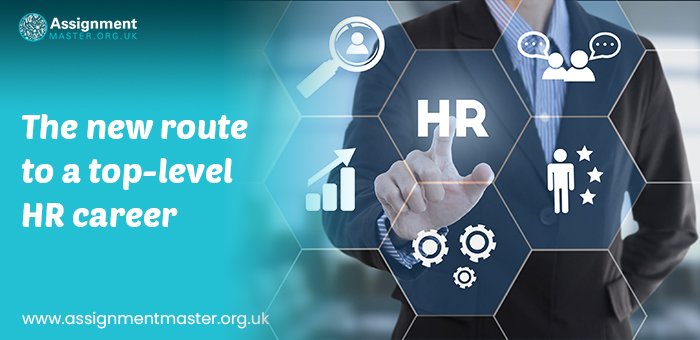
THE NEW ROUTE TO A TOP-LEVEL HR CAREER
Master Data Analytics and Technology
To modern HR career professionals, data means decisions; they draw worthwhile trends in the workforce, performance measures, and strategies for talent acquisition through mastering data analytics tools and technologies. Learn to run your processes most efficiently and strategically using HRIS (Human Resources Information Systems) and an AI-driven recruitment platform.
Cultivate Leadership and Change Management Skills
Today’s business environment is characterized by ubiquitous change, so HR leaders have to assume the responsibility of change management and leadership. They need a special blend of strong communication, empathy, and resilience to help them navigate employees through change periods. Nurturing a climate of flexibility and learning would mean that HR would be best placed to contribute highly to change initiatives and ensure they result in positive outcomes.
Focus on Diversity, Equity, and Inclusion (DEI)
Inclusion at the workplace is ethically driven and, at the same time, an enhancement factor in increasing business performance and innovation. In this view, HR leaders should have an agenda in place for the promotion of diversity, equity, and inclusion efforts that help to create an environment wherein each employee is valued and feels empowered to give their best. This will constitute the interventions of the policies and programs that will enhance diversity in recruitment, equity in compensation, and leadership practices.
Lead with Emotional Intelligence
Successful HR leaders understand the role of emotional intelligence (EI) in managing interpersonal relationships and driving organizational success. For example, HR practitioners may be able to mediate the multifaceted human dynamics in the workplace and bring harmony using their harnessed abilities of empathy, self-awareness, and social competence. Prioritizing EI in leadership development initiatives can enhance employee engagement, morale, and overall performance.
Stay Agile and Adaptive
These technological advances and socioeconomic shifts are changing the HR landscape. All professionals in this field, even those who look for CIPD Human Resource Management Assignment Help, should take hold of this: technological advances and socioeconomic shifts are areas of growth, not hindrances. To move towards the growing landscape, HR practitioners must continue learning and innovating dynamically, bringing about change for the better within the organization.
Strategically Manage Talent Acquisition and Retention
Talent acquisition and retention are the epitome of HR leaders’ priorities to build high-performing teams and sustain competitive advantage. HR career professionals will find it easy to acquire great talent and thus curb turnover rates through strategic recruitment approaches, employer branding, and competitive compensation and benefits package schemes. In addition, it motivates the staff’s loyalty, engagement, and long-term commitment through investments in employee development programs, career pathways, and recognition programs.
Drive Organisational Agility and Innovation
Clear changes in markets are happening rapidly, and technological advancements are leading enablers for the survival and growth of organizations. HR leaders must be proactive in helping imbibe a culture of innovation, collaboration, and learning in their organizations. Encouraging the testing of new ideas is one way HR career professionals can support agility and adaptability. Welcoming failure as a learning process is another crucial approach. Giving the power to question orthodoxies to employees is key. Collaboration and knowledge sharing build cross-functional collaboration, facilitating idea exchange, fueling creativity, and speeding up innovation initiatives.
Stay Ahead of Legal and Compliance Issues
The nature of the regulatory landscape requires that the practitioner remain up-to-date with the changes in employment laws. Labor regulations and requirements for compliance also demand constant attention. HR leaders would take higher platforms. They discuss issues like discrimination and harassment proactively. Sometimes, they address workplace safety to mitigate risks, maintain ethical standards, and protect the organization. This, coupled with legal counsel, involves presenting an audit from time to time. It also involves arranging training on compliance policies as a part of legal and best practice obligations related to H.
Promote Work-Life Balance and Well-being Initiatives
In today’s fast-paced work environment, employer support for wellness and work-life balance is increasingly important to maintain high productivity, morale, and engagement. HR leaders can put in place programs, including flexible work arrangements, wellness activities, and mental health tools. These programs will go a long way in ensuring that they will attend to the physical, emotional, and psychological needs of employees. Therefore, HR career professionals foster a culture where they care for work-life balance and highly value self-care, contributing to a more wholesome, happier, and stronger workforce.
Measure and analyze HR Analysis for Continuous Improvement
This would help ensure that organizational policies and practices remain optimized. HR leaders could use KPIs and HR metrics to measure them in perspective with the Talent Management Initiatives. They could also apply them to the Employee Engagement Program and Organizational Development Efforts. Such metrics may include, but are not limited to, turnover of employees and the cost of retaining employees. Productivity rates and training outcomes provide invaluable information for HR career professionals to change their strategies. Regular HR data analysis involves proactive decision-making, identifying trends and patterns, and driving continuous improvement in HR processes and results.
Conclusion
It is such that the path needs a mix of modern and conventional HR expertise with contemporary skills and a strategic mindset to cut it out for a top-level HR career in the modern era. That is to say, HR, alongside other emerging leaders, would be able to successfully negotiate the shifting landscape, growing in data analytics mastery, maturing in business acumen, leadership capacity, diversity, inclusion, and effectiveness in networking—while staying agile. From talent acquisition to organizational and HR leadership, this path to the
@Copyright 2024 Assignment Master UK

Leave a Reply